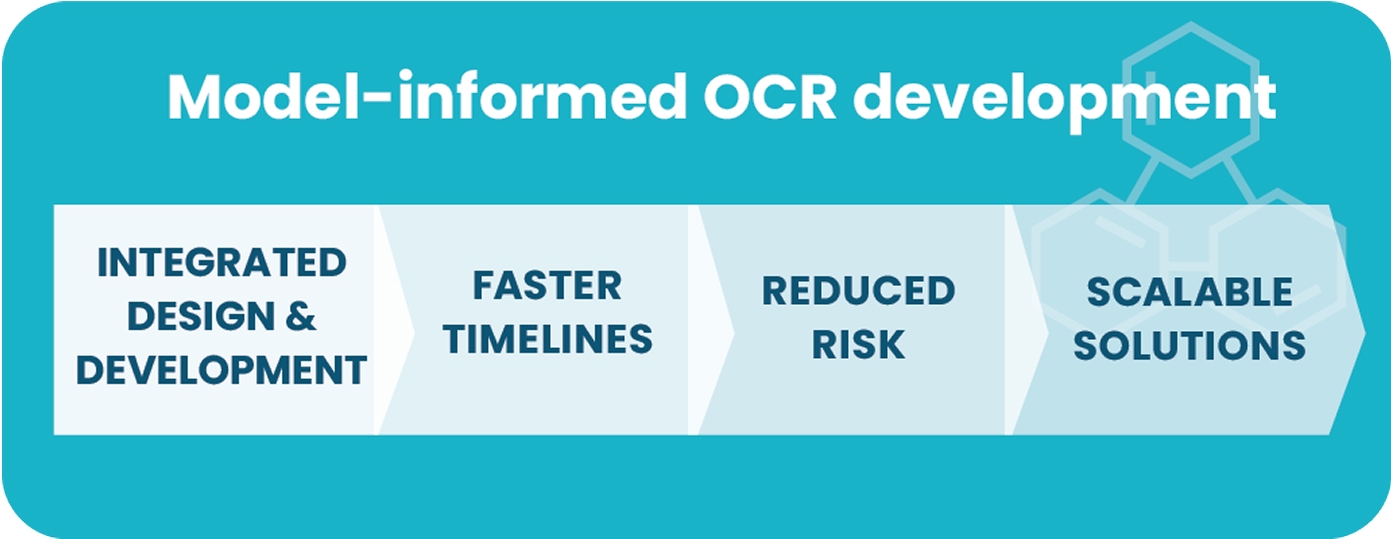Introduction
In early-phase drug development, particularly for oral controlled release (OCR) dosage forms, achieving the right pharmacokinetic (PK) profile is essential to demonstrating proof-of-concept (PoC). Outsourcers navigating this phase are not only seeking clinical validation - they're also laying the groundwork for scalable, manufacturable products. In this regard, model-informed development approaches have the potential to integrate PK modelling with formulation design, enabling smarter decisions, faster timelines, and reduced risk.
This article explores how modelling can be used to guide OCR product design, from initial data interpretation to formulation optimisation and GMP readiness and supply.
From Data to Design: Using PK Modelling to Inform OCR Strategy
1. Starting with Immediate-Release Data
A combination of in vitro physchem and ADME data plus early PK data from animal and human studies using
immediate-release (IR) formulations provide a foundation for modelling. These data help define human PK
parameters and exposure targets and identify limitations such as short half-life or high Cmax. These data
anchor the modelling process, helping identify where controlled release could improve therapeutic
performance or mitigate safety risks.
2. Defining Optimal Release Profiles Through Simulation
Using compartmental or physiologically based PK (PBPK) models, it is possible to simulate alternative
release profiles to meet target product profiles (TPPs). These simulations help flatten Cmax to reduce
peak-related toxicity, extend AUC to maintain therapeutic levels over time, and target regional
delivery (e.g., colon for IBD). The modelling guides formulation strategy - whether extended-release,
enteric-coated, or colon-targeted—and helps prioritise technologies such as matrix systems, coated pellets,
or multiparticulates.
3. Formulation Composition: Linking Design and Performance
Once a target release profile is defined, modelling can be used to evaluate how close prototype formulations
are to the desired performance. In vitro dissolution data (biorelevant media, volume-limited conditions) are
integrated into the model. Sensitivity analysis identifies critical formulation parameters such as polymer
type, coating thickness, and excipient ratios. Iterative refinement ensures alignment with predicted in vivo
behaviour. This approach reduces the need for empirical trial-and-error and accelerates formulation lock for
GMP scale-up.
4. Post-FIH Optimisation: Learning and Refining
Once OCR products enter human studies, models can be further refined using observed clinical data. Model
validation is performed against observed PK profiles. Adjustments to release kinetics are made based on
food effects, variability, or unexpected absorption patterns. Scenario testing supports dose adjustments,
bridging studies, or formulation tweaks. This iterative learning builds confidence in the product and
supports regulatory interactions, tech transfer, and commercial planning.
Strategic Impact for Outsourcers
Model-informed OCR development offers outsourcers integrated design and development, faster timelines (PoC in 6-9 months versus 12-18 months with empirical approaches), reduced risk through early identification of formulation liabilities, and scalable solutions designed with manufacturability and regulatory success in mind.

Conclusion
Pharmacokinetic modelling is more than a predictive tool - it's a strategic driver of product design. An integrated approach combining modelling with experimental iteration ensures that OCR formulations are not only clinically effective but also commercially viable. By aligning modelling with formulation science and development milestones, outsourcers can make smarter decisions, build stronger teams, and deliver successful PoC outcomes with confidence.
![]()
Seda Pharmaceutical Development Services provide modelling, dosage form design and clinical trial supply services supporting development companies from discovery, through early clinical trials and onwards to product approval.

